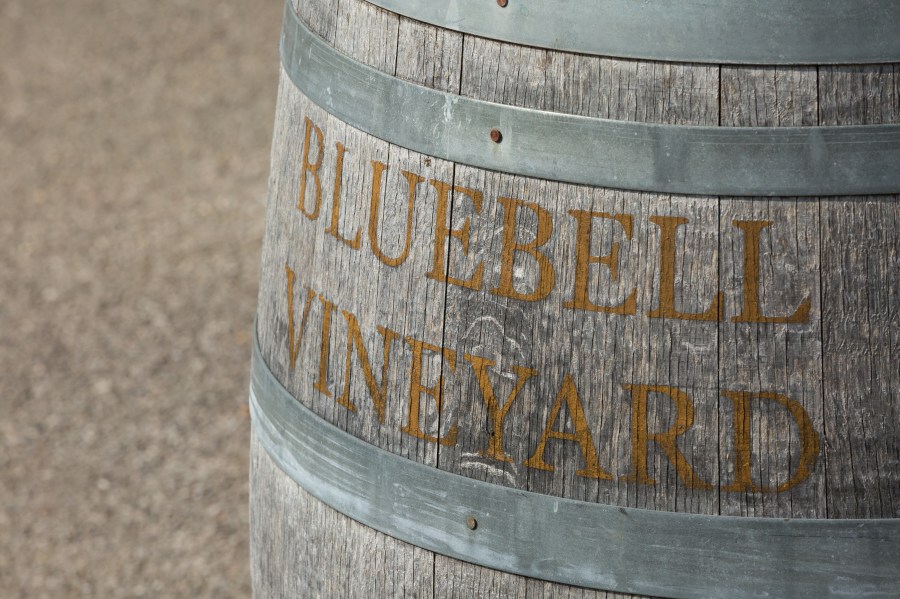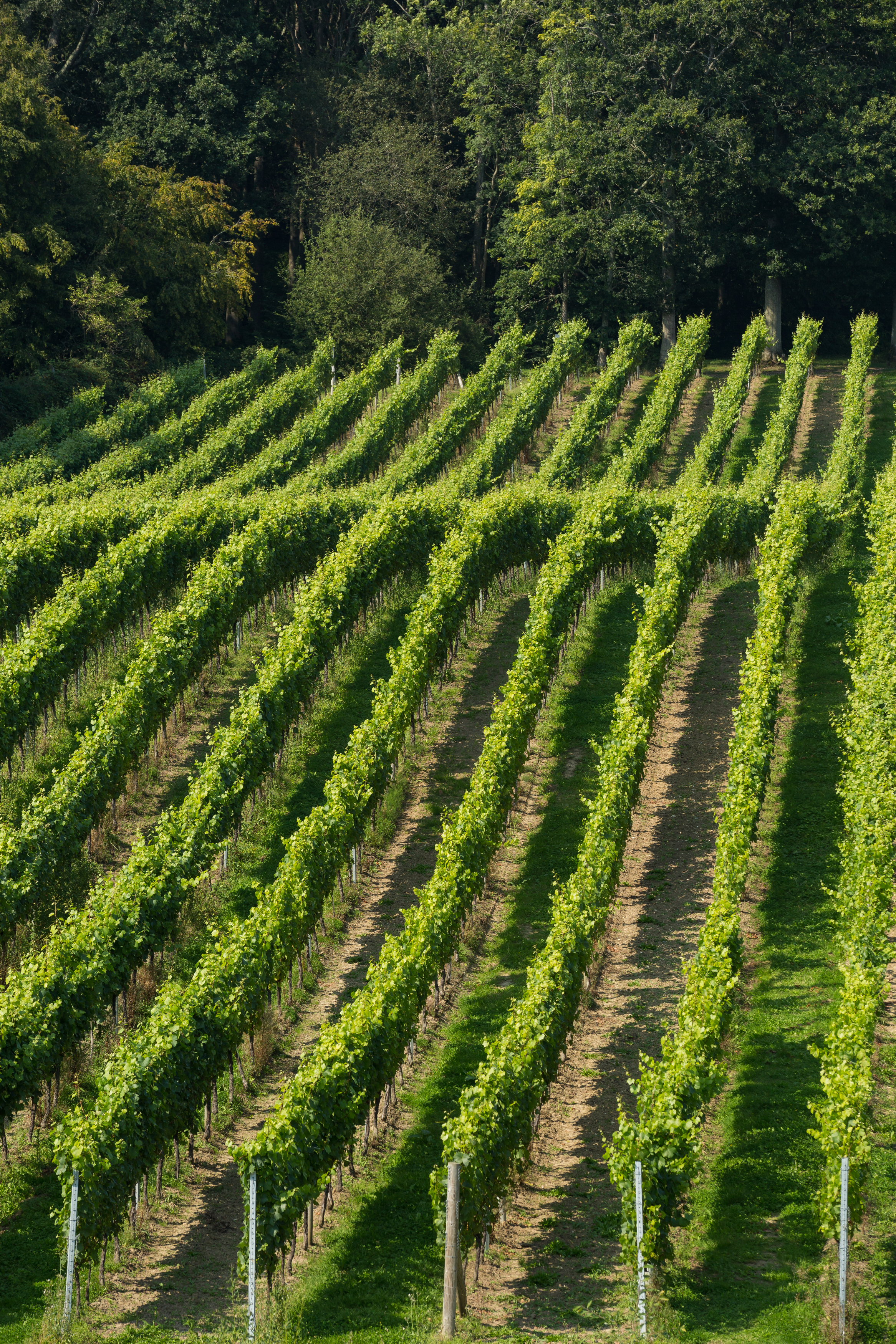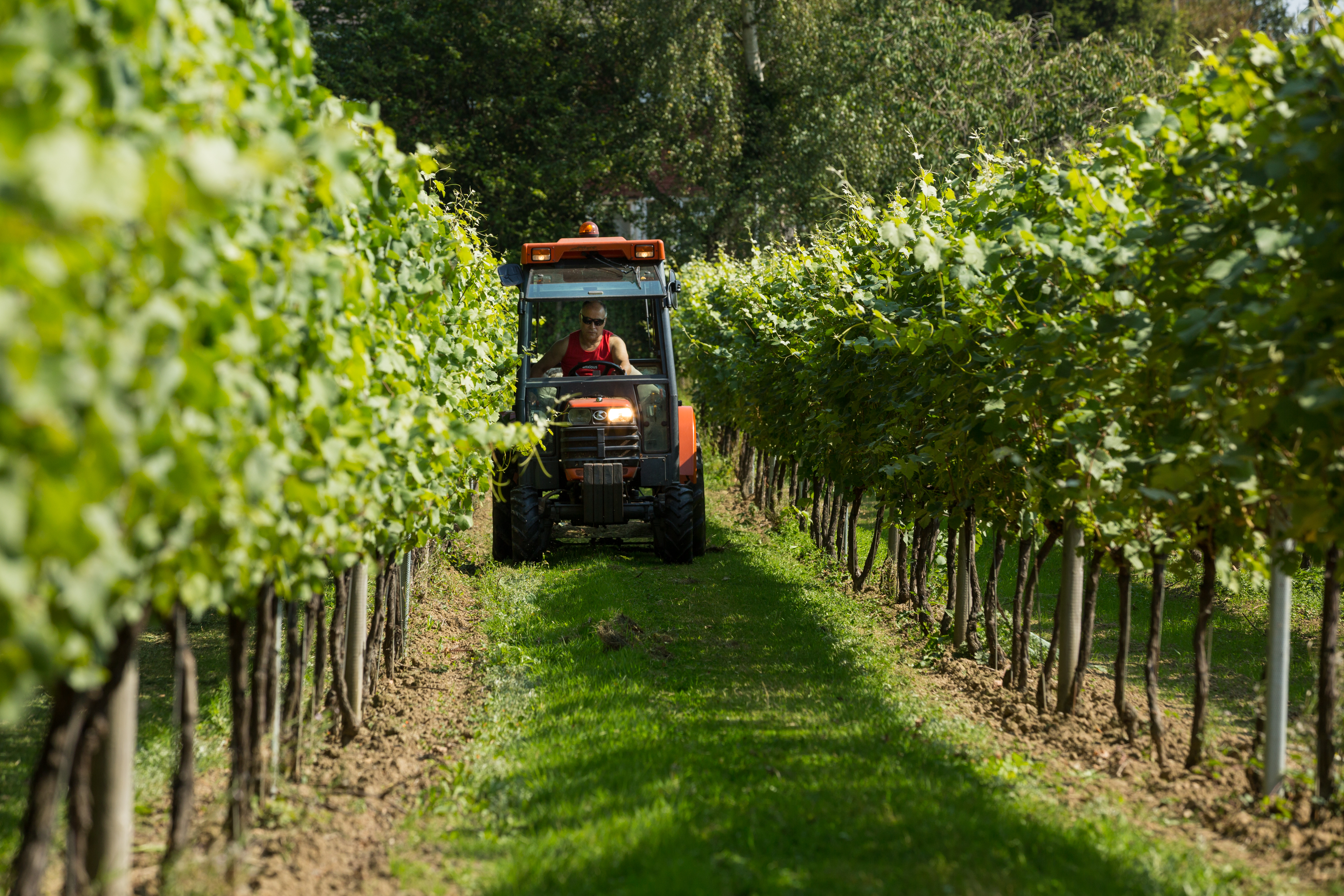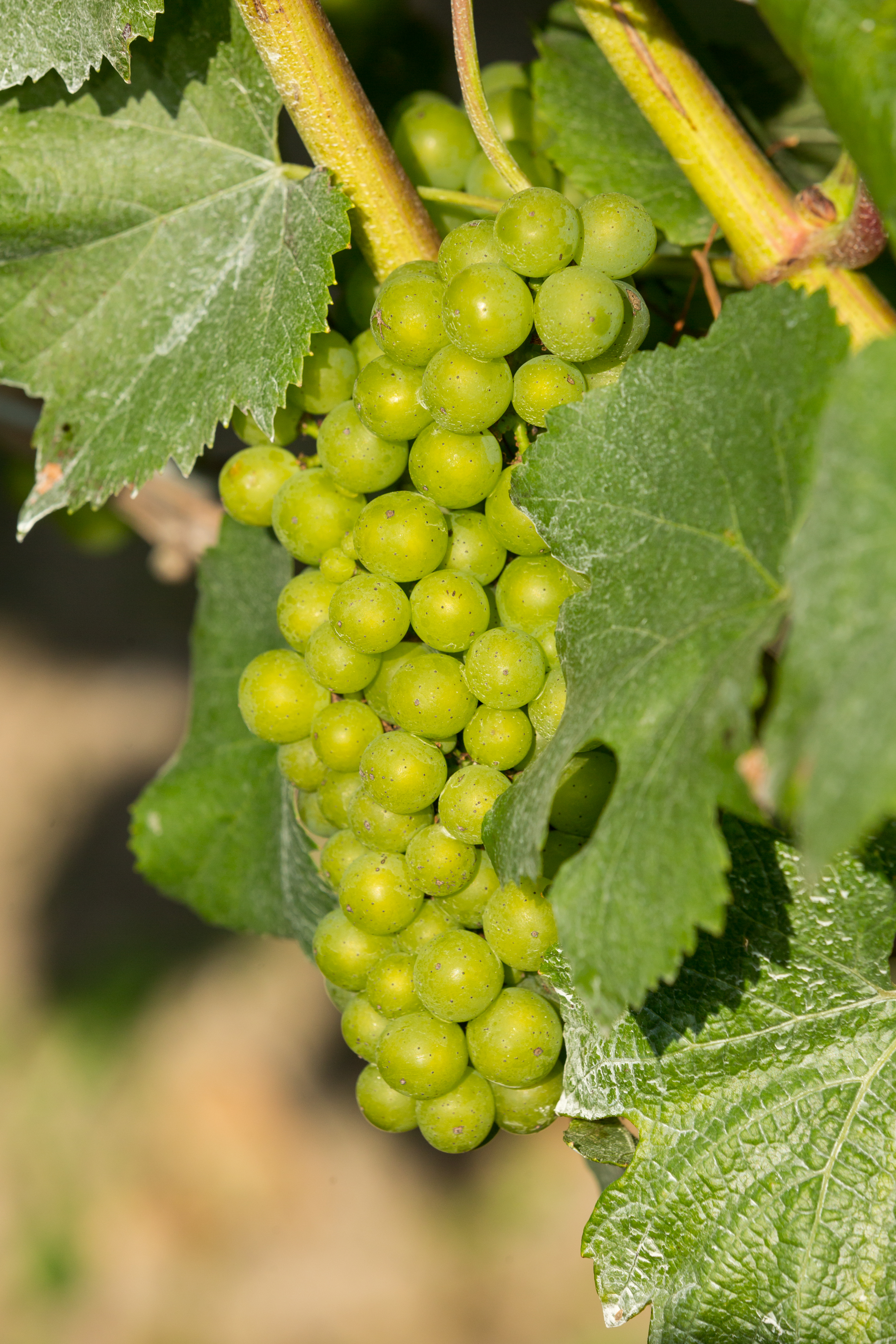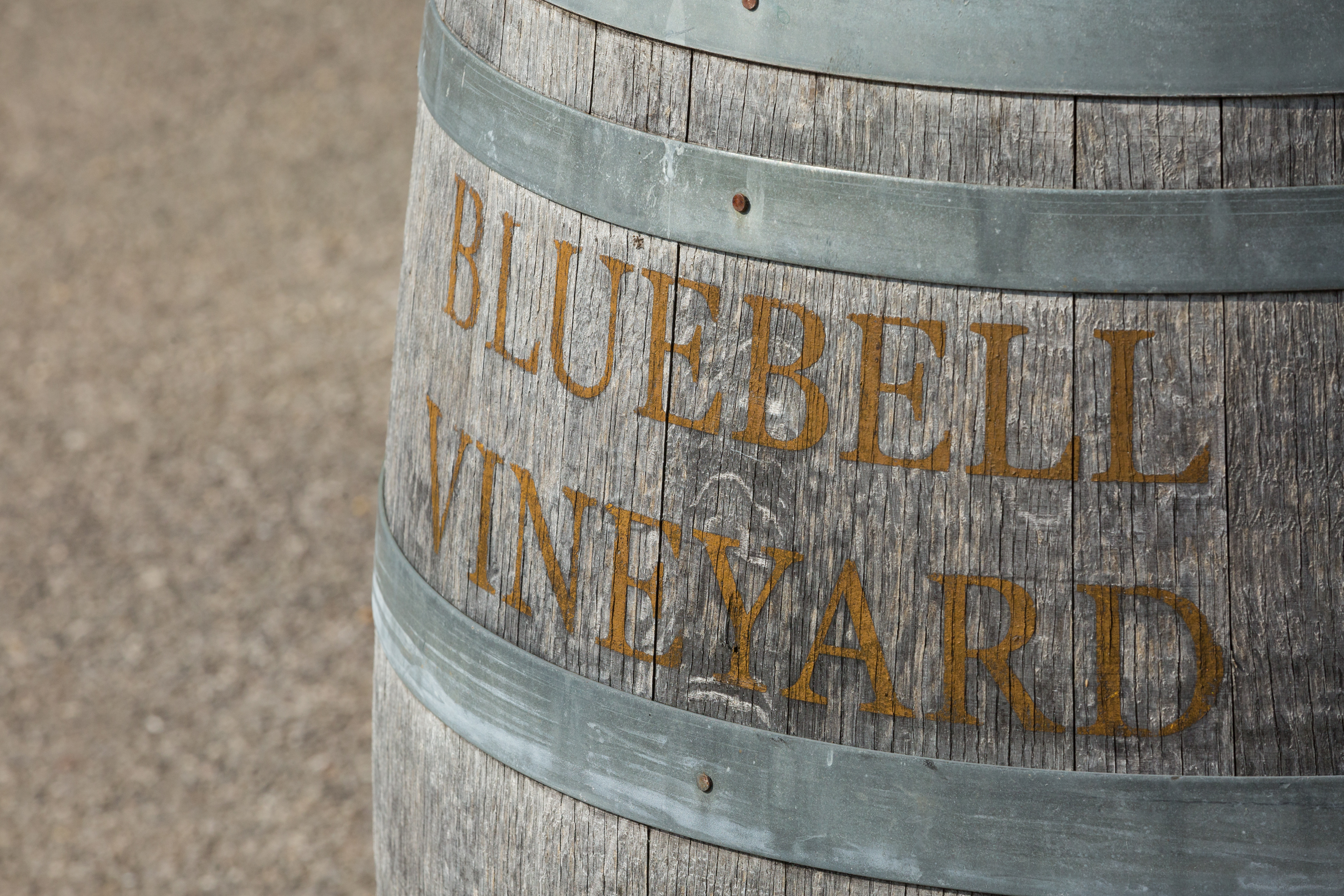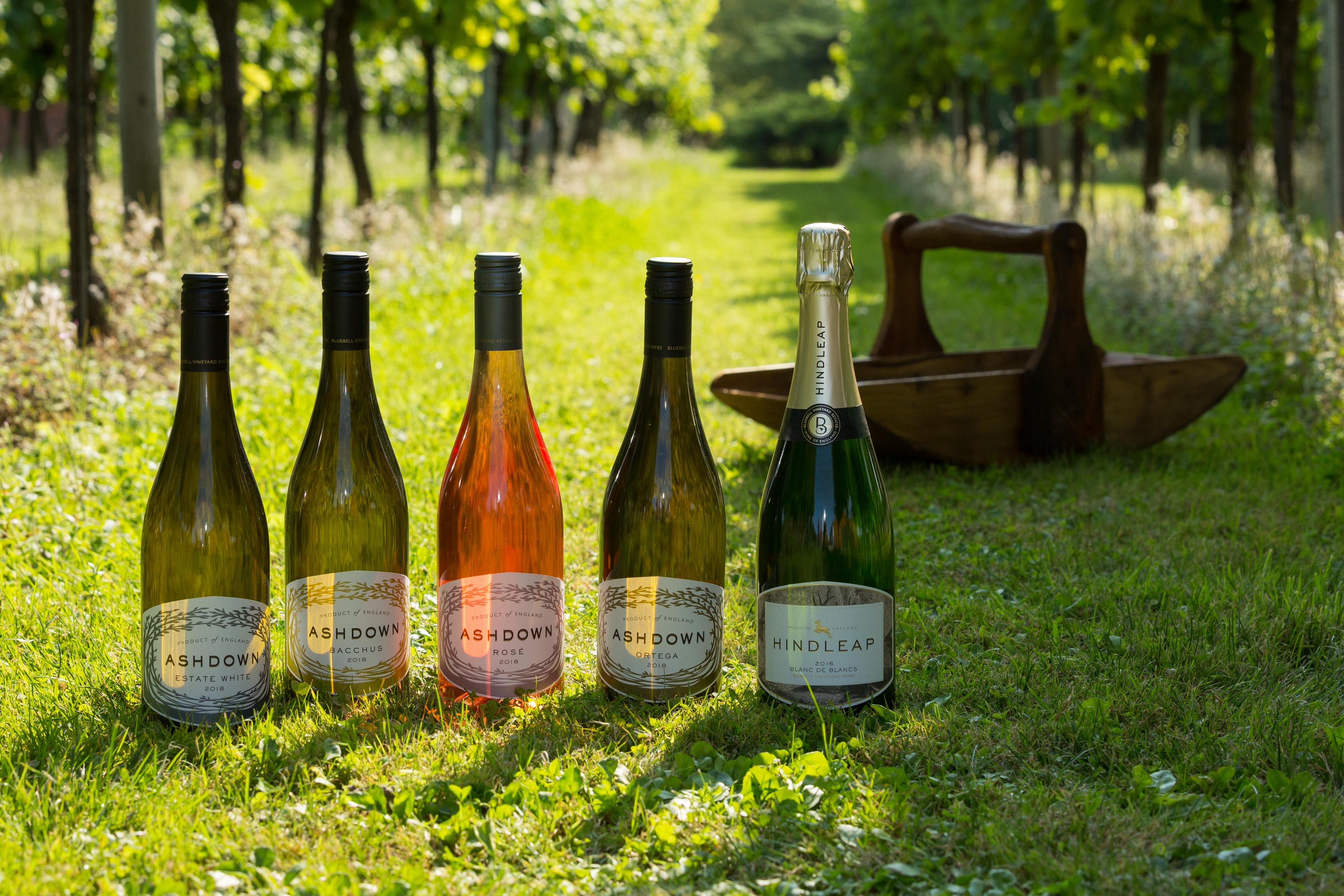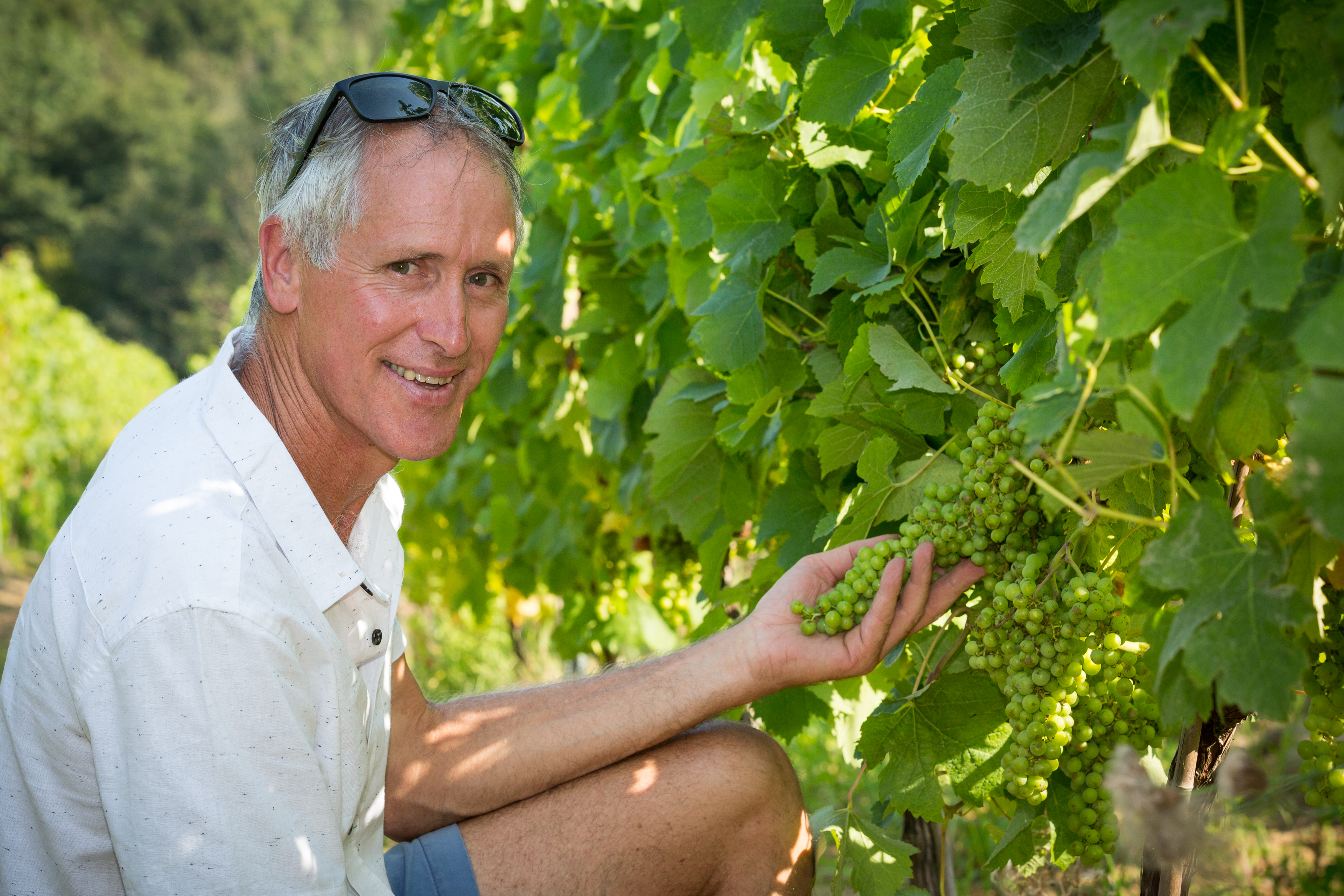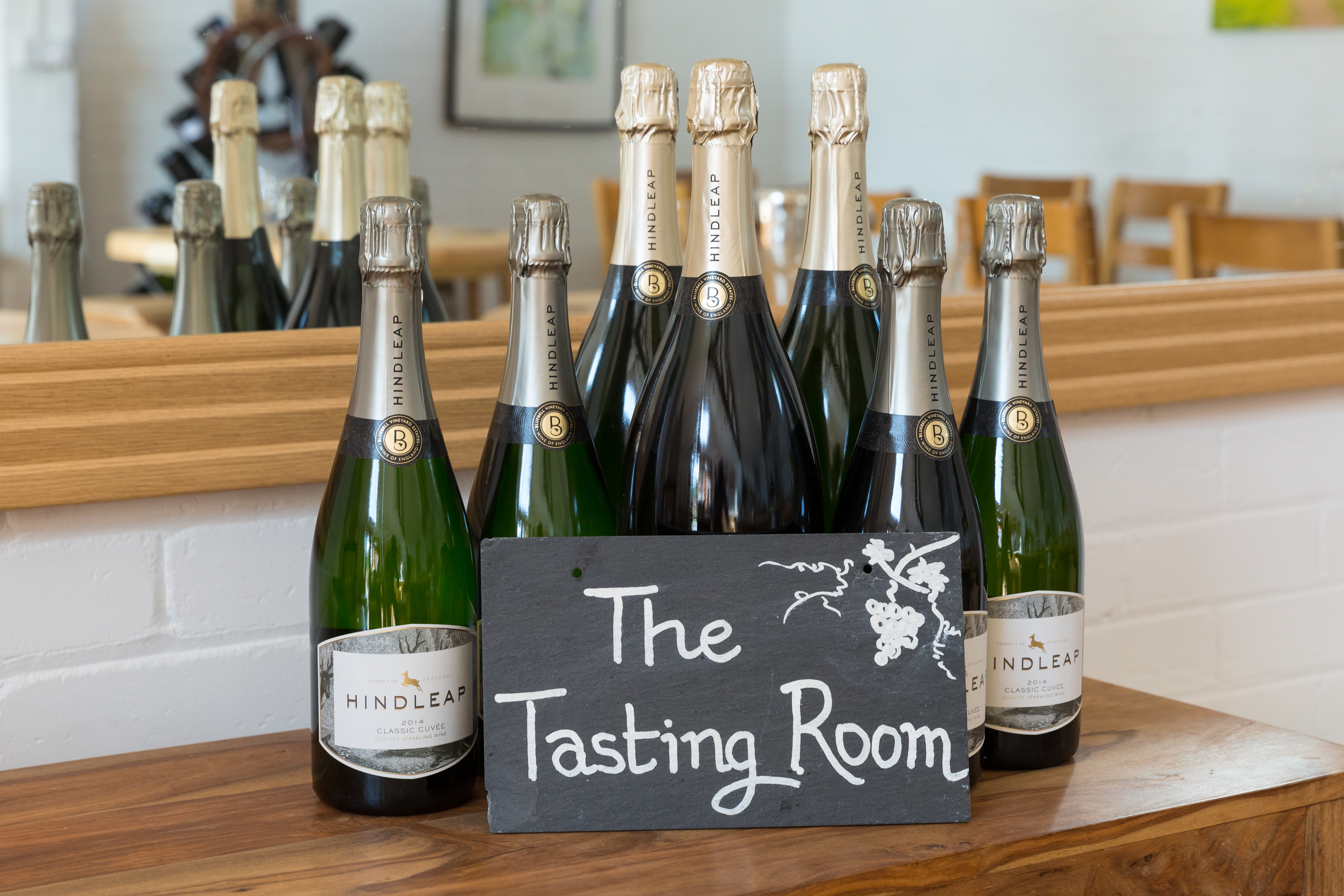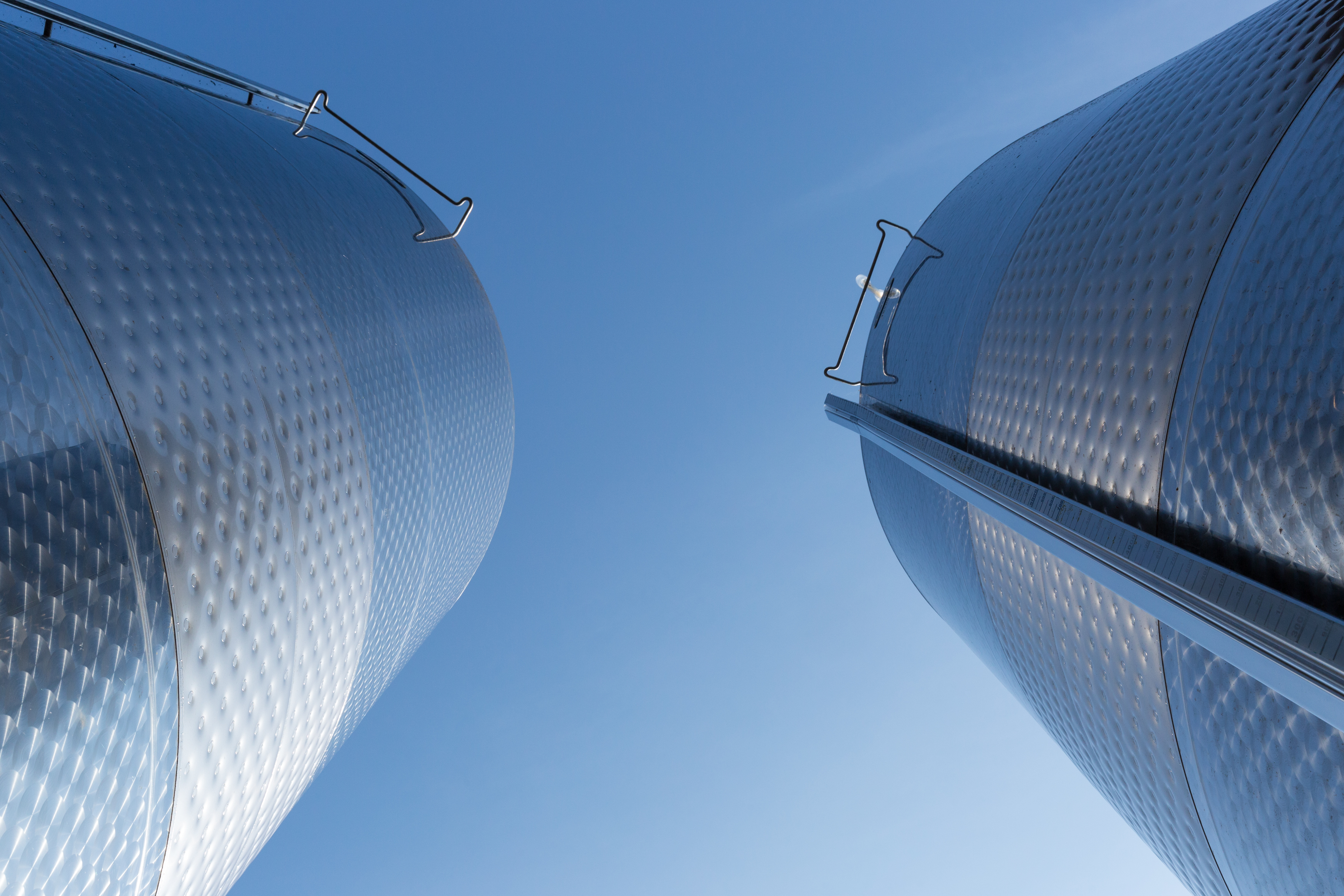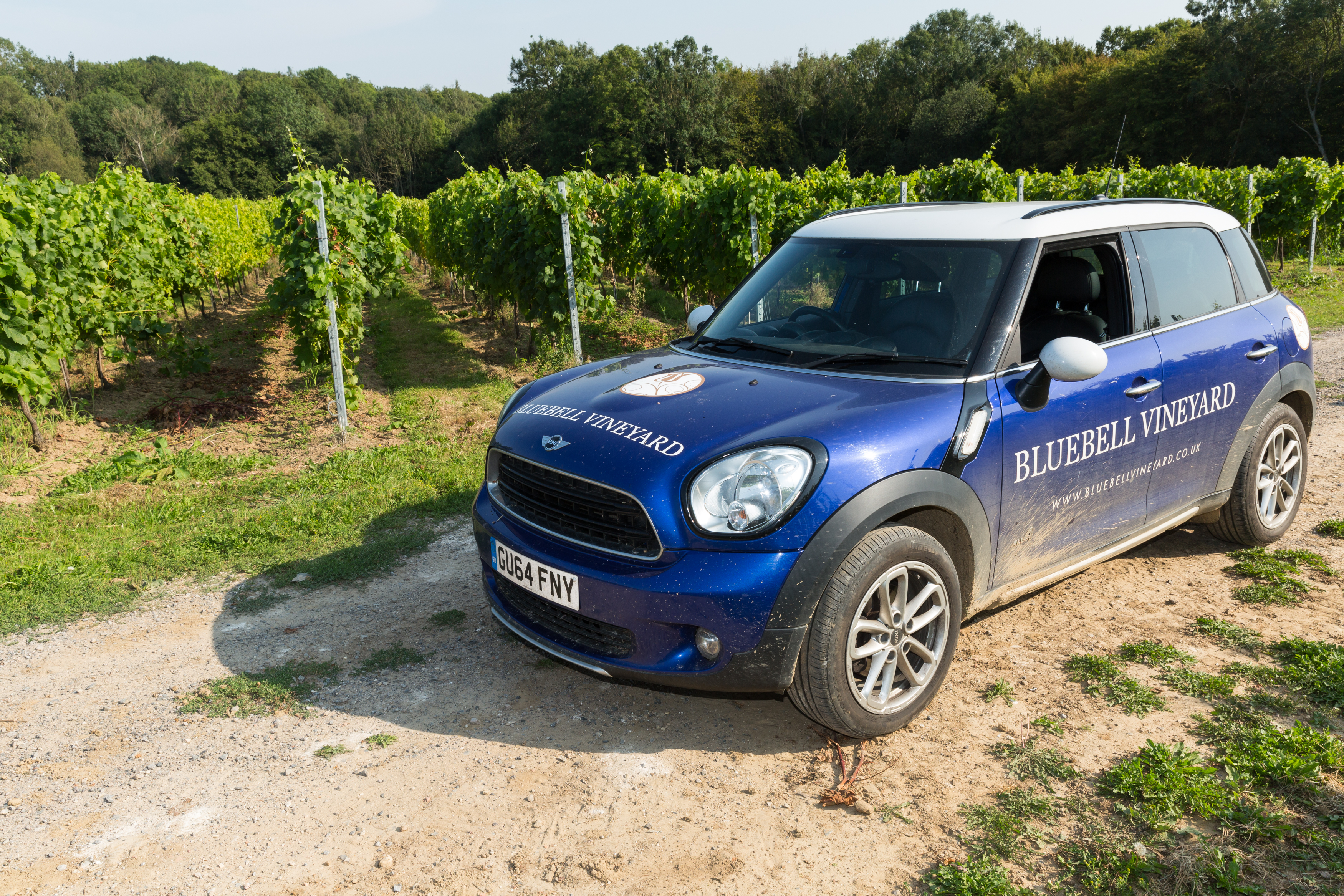The Sussex producer putting Merlot on the map in a new still wine range.
To borrow words from Guinness, one of my favourite non-wine drink brands, “good things come to those who wait”. Kevin Sutherland, ex-Plumpton lecturer, viticultural consultant, vineyard manager and head winemaker had been inviting me to visit Bluebell Estate in Sussex since the first Wines of Great Britain trade tasting that I attended as an editor in April 2018.
Almost 18 months on, coincidentally coinciding with the 2019 trade tasting, I finally found my way to Glenmore Farm in Furners Green and how glad I was to have waited, for Kevin has just launched the estate’s first range of still wines. Branded under Bluebell’s new Ashdown label, the 2018 vintage collection is brimming with exuberance, incorporating an enticing range of varietals including the lesser planted Chasselas and Merlot.
In true British fashion, my first remarks upon arrival were about the weather; visiting on Tuesday 27 August, the car’s thermometer had reached the dizzy heights of 36°C on the drive over from Kent. I was fully expecting Kevin to nod, smile and agree how fantastic this was for the vines, alas, also in true British fashion, there were some complaints to be had; mainly over the fact that some vines had succumbed to sun burn; not usually a problem this late in the season.
“You wouldn’t expect the temperature to be as warm as this, it is ridiculous; we thought that summer might be over when the temperature dropped the second week in August and it rained for almost a week,” said Kevin, who oversees the management of Bluebell Estate’s 100-acres of vines which are planted across three sites spanning both East and West Sussex. “We machine deleafed the east side of the vines earlier in the season to open the canopy and allow for air flow. The sun burn is just from the Bank Holiday weekend which is very annoying because instead of shrivelling up and falling off, grapes have hit veraison, so they are starting to get sugars in them, and we will now need to keep on top of Botrytis. I am hoping that the temperatures will drop soon so that we can do a more prominent deleaf.”
We headed to the winery first, where having finished bottling everything apart from 7,000-litres of reserve wine, cleaning down in preparation for the 2019 season was in full swing. Kevin showed me the space where a three-tonne press usually sits, before we walked through to see the new six-tonne SK press which arrived last year along with a conveyor belt, crusher-destemmer, 10 new tanks and two large blending tanks.
“We have always, up till now, picked by clone and not only do we ferment those clones separately but on the larger blocks we try to do a free run pressing ferment in smaller tanks too,” said Kevin as he showed me the winery’s range of fixed capacity tanks which vary in volume from 500 to 7,000 litres.
“Instead of just whacking all our Chardonnay into six or seven tanks, I like to have a mixture of options, it keeps the individuality with each of the clones and gives us much greater choice when it comes to blending.”
With 15 Pinot noir, 10 Chardonnay, six Pinot meunier, four Chasselas, two Bacchus, two Merlot, two Ortega, Seyval blanc, Pinot gris and Pinot blanc, the estate certainly has plenty of clones to choose from. All of which have been carefully selected by Kevin, who has been given carte blanche over operations after he was originally appointed as a consultant by owners Barry and Joyce Tay back in 2004 when they were looking for alternative uses for the ex-pig farm.
“The first 14,000 Pinot noir and Chardonnay vines were planted in 2005 on the ‘home view’ site, which is north-west facing and goes against everything you would ideally want for a vineyard, but it was the only available plot at the time and it was only supposed to be a trial,” said Kevin. “Having kept pigs, the land was extremely fertile, and the vines grew about four metres in their first season. The following year ‘wood view’ was established, which doubled the size of the estate, and now there are two satellite sites bringing the total up to 130,000 vines spread across 100 acres.”
Beautiful undulation
While storage space is quickly becoming an issue for others across the industry, walking out to the vineyard across the yard, we passed a multitude of now redundant agricultural buildings and pig housing units, with Kevin pointing out which are used to make, store, finish and age the wines. Everything, from pressing to disgorging, currently happens on-site at Glenmore Farm, but with planning secured for a new winery on one of the new sites, some operations are set to move from harvest 2020.
Heading past the tasting room, towards a decadent white marquee, which is used to host weddings and functions, and in between four ponds, previously slurry lagoons, the vineyard came into full view. Its beautiful undulation drew the eye up to the woodland, which is home to the mass of bluebells from which the estate gets its name, and deer too, from where the sparkling wine name ‘Hindleap’ was partially derived. Hind is a female deer, while Hindleap is a local area within Ashdown forest, after which the still wines have been named.
“The soil types here really vary,” said Kevin as we dropped down a steep path to head back up through the first few rows of Chardonnay. “The middle and top ridges are both sandstone, with sand subsoil, the other fields at Glenmore Farm are clay and loam. It does add something to the wines and it will be interesting to see what the satellite fields bring to the party because one of them is purely sandy loam.”
Most of the vines are established on double guyot, but interestingly Kevin showed me some clones on triple guyot which he has employed in an attempt to “rein in some of the vigour” by having more fruit on each vine, opting for “somewhere between 30 and 36 buds per vine as opposed to 20 to 24”.
Two dream years
With the sun beaming, it was not long before we started to discuss the prospects for the 2019 vintage and the growing season so far.
“Bud burst was 10 days later than last year but 10 days ahead of a normal year,” said Kevin, who’s career in the English wine industry started in 1990 at St George’s Vineyard near Heathfield. “Flowering, which started on 15 June, was 10 days behind 2018 but again well ahead of normal. We had this break all the way through the season, right up until the Précoce in the satellite field hit veraison on the same date as last year. I suspect we might be picking it on the same day, give or take a few days, as last year; somewhere around 12 September.”
In terms of disease, the prolonged cool spring coupled with the intermittent rain and hot weather has undoubtedly led to more pressure, with moisture being drawn up from the vineyard floor increasing the humidity through the canopy.
“We do have some Downy on the young canopy and I spotted some Powdery about on the established fruit, which we haven’t had for about six years,” said Kevin.
This wetter weather has also had a big impact on weed establishment. In a bid to move away from chemicals, Kevin applies one herbicide treatment at the beginning of the season before moving on to mechanical methods, but where last year “you simply tickled the ground and the weeds died”, it has been difficult to keep weeds under control this time around.
“I personally don’t want to rely on chemicals because I think a lot of them will lose their licence,” said Kevin. “As an industry, we do need to ensure that our practices are for, not against, the environment. We are cutting down on fungicides too; it is challenging. In the long run, in our industry, it will be better to look at the breeding of new disease resistant varieties which don’t need spraying. That is the way to move: cutting down on chemical applications and therefore cutting down on costs and tractor movements.”
Looking back at the beginning of the season, it may have been easy to think that vines had used all their energy last year and were potentially stressed, but as the season has progressed, Kevin believes there are no tell-tale signs to prove this. Bunches appear to be fewer but are looking bigger, with the total production looking only fractionally below 2018 levels.
“It is looking like two dream years in a row, but it depends on a lot of things, especially what the weather does from September onwards,” said Kevin. “Looking at floral initiation too, we could potentially be in for a very heavy crop again next year depending on the obvious hurdles of frost and flowering conditions.”
Part of the intrigue
Playing a dual role as vineyard manager and head winemaker, Kevin does his fair share of tractor work and uses his time among the vines to build a picture of what might be coming into the winery come harvest.
In a bid to create “a consistent style to appease larger clients”, Kevin explains that Bluebell Estate has started producing a multi-vintage sparkling blend, consisting of 2011 and 2013, which are already in bottle to provide autolytic characters, plus 2016, 2017 and 2018. The rest of the estate wines, four stills and five sparklings, however are all vintage, something which Kevin is incredibly passionate about.
“The differences between the vintages is what makes drinking and tasting wine exciting; experiencing what is in the bottle each year is part of the intrigue,” said Kevin. “I intervene as little as possible in the winemaking, but we do manipulate the canopy, so a lot of the flavours happen in the vineyard. We then have all these components for blending and because we never set out to make a certain volume, it means that all our styles are made depending on fruit profile.”
Vines established on the estate in 2005 and 2006 are now fairly reliable croppers and Kevin already has a good idea of how each clone and variety will perform each season. The new sites however are still a bit of an unknown and the winemaker is very much looking forward to seeing “how they change over the next 10 years as they become more reliable with their flavours and capabilities”.
Traditionally, the aim has been to pick when the sugar levels are as high as possible, to avoid the requirement for chaptilisation, going on to ferment the wines at a cool 12°C to 13°C. However, the warmer vintages, such as 2016, 2018 and potentially 2019 are forcing Kevin to readdress this approach.
“When I designed and created the Bluebell range, I wanted something very different from anything else on the market and so I wanted something very fruit driven, crisp and citrusy with apple undertones,” said Kevin, “but the warmer vintages have led to more phenolic ripeness in the fruit and we are now seeing quite tropical flavours which isn’t ideal. The cool ferment has also retained those characters. For the coming vintage I will either be harvesting some of the Chardonnay earlier to retain some of the acidity and then chaptalising by 0.75% to retain those crisp malic flavours, or I will be doing a warmer ferment to blow off some of those tropic notes but then risk losing the wrong characters.”
Unusual varietals
Having given a different edge to his traditional method sparkling wines at a time when fellow producers were “mostly copying Champagne”, after many years of requests from trade customers, Kevin is now putting his own stamp on the English still wine category.
“In 2013 we planted some Bacchus, Ortega, Pinot noir Précoce, Seyval blanc, Chasselas and Merlot to tap into a different market,” said Kevin. “The Bacchus is my take on the varietal, so it is a much lighter style. The Ortega is barrel fermented, so it has more weight behind it, and we are hoping that with time in bottle the vanilla flavours will develop a little. We have used the Chasselas, which is aromatic, but it isn’t as grassy as Bacchus, in our Estate White, and the rosé is a blend of 55% Pinot noir, from one of my favourite clones on the ‘wood view’ site, and then 45% Merlot.”
For the foreseeable future, the still wines will remain a small percentage of the estate’s total volume, around 15%, and Kevin is also trialling a traditional method sparkling Chasselas, a sparkling red Merlot, as well as a still, single varietal Merlot red, which is currently sitting in oak.
“We have 720-litres of Merlot which is coming on very well; although you have to remember that it is still an English red which is very different from a traditional Merlot,” said Kevin. “We chose to plant Merlot because it is known for being a reliable crop, it has a later budburst so doesn’t get hit by the frost, is somewhat disease tolerant and benefits from smaller open bunches so avoids the risk of Botrytis as the fruit develops.”
As almost anything will grow in the UK, the real success of a variety comes down to whether or not it will ripen. Merlot does require a longer ‘hang time’ so will need favourable end of season conditions and Kevin’s team will also need to green harvest, aiming for around 10 to 12 bunches per vine. This year the late-flowering Merlot was hit by a flurry of bad weather spells and there has been more chicks and hens on some of the fruit sets, but these will be removed during the green harvest.
Also benefiting from long, open hanging bunches, the Chasselas is best described by Kevin as “a good all-round varietal which looks like it will grow and perform across the whole vineyard”.
Discussing the long-term potential of these unusual varietals (Bluebell is not the only producer to have planted Merlot in the UK) Kevin believes that all forward-thinking viticulturists need to get varieties like this established now, and when it comes to Merlot, while it might not ripen every year, it depends on whether a grower “can take those hits” because in the years it does “come right” there is the option to “produce something extremely good”.
Photos ©Martin Apps, Countrywide Photographic

